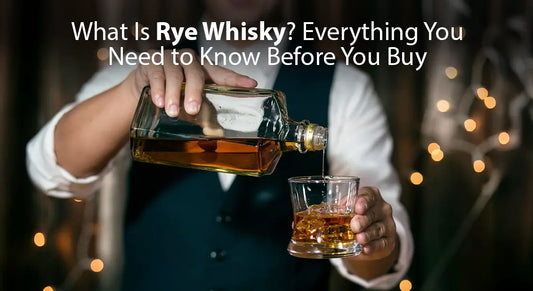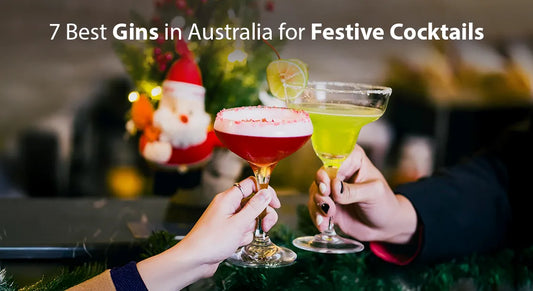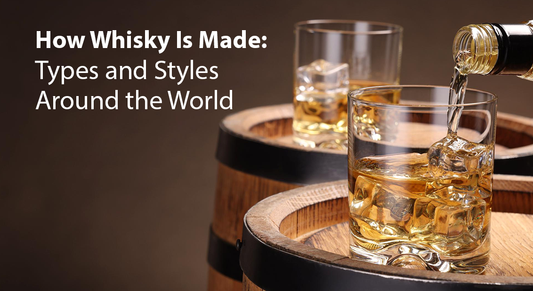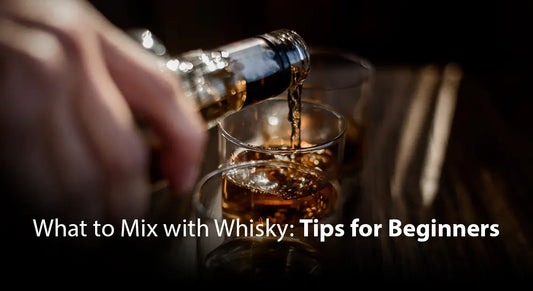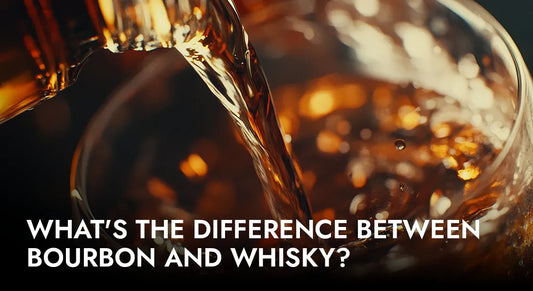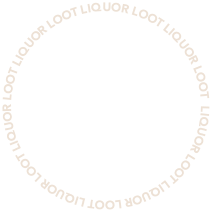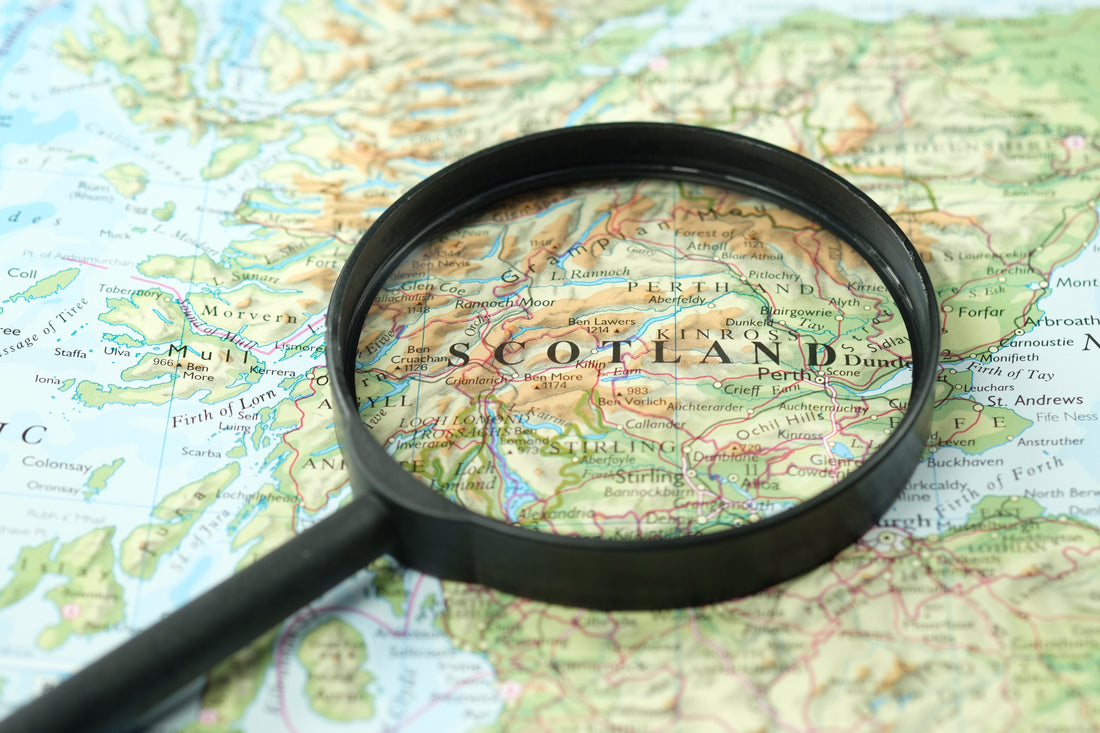
Scotch Whisky Tour - A Guide To The 6 Different Whisky Regions In Scotland
Whether you’ve had one Scottish dram, or one thousand, you’ve likely seen some strange place names on bottles and drams – maybe “Campbeltown”, “Speyside'' or perhaps “Islay”. But what’s the story here? What do these names mean? How do you even pronounce them?!
Read on, friend, we will give you the inside scoop on Scotland’s whisky regions.
1. Highlands
Highland flavour profile: Fruit Cake, Malt, Grassy, Dried Fruit, Spice and Sometimes Smoky
The Highlands Region is by far the largest whisky area in Scotland, stretching from just north of Glasgow, all the way to Thurso, the most northerly town on the British mainland. As such, the region’s whisky is extremely diverse: ranging from floral drams to mildly peated and richly Sherried drams.
Because of its size, the Highland region is sometimes broken down into four sub-regions, each having its own general whisky flavour profile. The Northern Highlands are known for sweet, full-bodied and often floral single malts, such as Glenmorangie or Old Pulteney.
The Eastern and Southern Highland whiskies might be a little lighter in texture and can be strongly sherried – examples include Glengoyne and Deanston. While the Western Highlands whiskies can have a slight coastal, maritime character, as in the case of Oban. Highland whisky can even be peated, as shown by Ardmore’s smoky malts.
Highland whisky is some of the most varied and complex in Scotland. You could spend a lifetime drinking only Highland malts, and never get bored.
2. Speyside
Speyside flavour profile: Honey, Floral, Apple, Vanilla, Oak, Full-bodied, and Dried Fruit.
This is the big time. We are truly in whisky-land in Speyside, with the area containing the highest concentration of distilleries of any Scotch whisky region. It is also home to some of Scotland’s most prestigious distilleries: the Macallan, Glenfiddich, the Balvenie and Glenfarclas, amongst many more.
About 60% of Scottish single malt whisky production is in Speyside, which is located in the centre of Scotland’s “Hump”.
Traditionally, its northerly location, proximity to the coast and the urban centres of Elgin and Inverness meant it was perfectly balanced both for avoiding the English taxman and shipping spirit around the world. Dufftown alone, nicknamed the Whisky Capital of the World, contains 6 distilleries and produces over 40m litres of whisky annually, about 10% of Scotland’s output.
These days, a lot more Speyside distilleries are experimenting with peat, so the occasional smoky dram can be found, but by and large Speyside is typified by a light, fruity spirit with a hay-like malt flavour.
Speyside is an excellent place for any beginner to start, containing some of the most iconic distilleries, and offering many approachable whiskies.
3. Lowlands
Lowland flavour profile: Grass, Honeysuckle, Citrusy, Toast, and Sweet.
Despite containing as much as 70% of Scotland’s population, the Lowland region has fewer distilleries than either the Highlands or Speyside. Historically, this is because whisky originally grew out of small scale farm distilleries, rather than the cities of Edinburgh and Glasgow; and because the Lowlands were close to the English border – and therefore the long arm of the Crown’s law and taxation.
What the Lowlands does contain is some of Scotland’s most productive grain distilleries. These create grain whisky which, unlike single malt, can contain different sorts of cereal and can be produced in a continuous column still – allowing for vastly greater production than single malt’s pot stills. Grain spirit is most used to bind together blended whiskies like Johnnie Walker, but can be enjoyed as a single grain whisky.
In the past, Lowland malt distilleries were famed for their practice of triple distillation, apparently due to the number of Irish migrants who moved to the region and brought their own whisky-making techniques with them. These days, just Auchentoshan and Ailsa Bay practice this method.
If you want a lighter, milder Scotch whisky, then Lowlands single malt is your best bet. Notes of cream, hay, cinnamon, and ginger are often present, adding complexity. The "Lowland Ladies," a group of distilleries famous for their light and floral whiskies, are native to this region.
From a low of just two malt distilleries in 1983, the Lowland region has thankfully returned to health, with over five times that number currently operational, and more on the way!
4. Campbeltown
Campbeltown flavour profile: Smoky, Briny, Grassy, Dried Fruit, and Sweet.
At one time the most productive region of Scotch whisky with over thirty distilleries confined to this small town, Campbeltown had a drastic fall from grace in the early 20th century. Just three distilleries remain, the fewest of any region in Scotland.
Campbeltown is somewhat overlooked, but it should not be. It is the only town to be recognised as its own scotch region, and its distilleries still have quality drams with a distinctive identity.
The three distilleries still bearing the torch for the region are: Glen Scotia, Springbank, and Glengyle. Thankfully, Springbank makes up for Campbeltown’s losses by producing a wide range of spirit under different names, including “Longrow” (heavily peated, double distilled), and “Hazelburn” (unpeated, triple distilled). Springbank’s standard range tends to be a little maritime and lightly smoky, and is partially triple distilled for a weighty mouthfeel. Glen Scotia produces more of a nutty, fruity style, whilst Glengyle (bottled as Kilkerran) is light and aromatic, with some peatied varieties.
Campbeltown is perhaps one of Scotch whisky’s last hidden gems, not widely known by the average drinker, but highly prized by the aficionado.
Fun fact – Campbeltown is located on the Mull of Kintyre, famously immortalised by Paul McCartney in his 1977 song of the same name!
5. Islay
Islay flavour profile: Seaweed, Briny, Peat, Smoky and Oily
For most people Islay (pronounced 'eye-luh') means one thing and one thing only: Peat. And this is largely true, though some delicious unpeated whiskies are also made on the Islay.
Known as the “Queen of the Hebrides”, Islay is found off the West Coast of Scotland, just a little north of Campbeltown.
Over eons, the island’s vegetation eventually decayed into peat, a carbon-like fuel source on the way to becoming coal. When whisky production began in Islay, peat was burnt in ovens under malted barley, preventing the grain from germinating any further. This process imbues the malt with a smoky, earthy flavour, eventually found in the finished product.
Islay is home eight producing distilleries, with another recently constructed and more in the works. Amongst their number are some of the most highly regarded whisky sites in Scotland, the likes of: Lagavulin, Bruichladdich and Kilchoman.
It’s true that Islay whisky is mostly peaty, but even within that peat, there can be found a range of different styles, from Laphroaig’s distinctive iodine flavour (which saw it labelled as medicine during Prohibition) to Caol Ila’s grassiness and Kilchoman’s ash, there’s plenty to explore. Just be sure you like peat, otherwise Bruichladdich and Bunnahabhain have you covered with some delicious unpeated drams.
6. Islands
Island Flavour Profile: Briny, Oily, Spicy, and Sweet.
As a whisky region, the Islands cover Skye, Arran, Mull, Jura, Lewis, and Orkney. Every island has its own taste profile, and anything from light, fruity, and citrusy to spicy and very peaty can be found.
The Islands do not always make the cut as an official whisky region and are sometimes considered to be part of the Highlands. But here at Whisky Loot, we like to give them a bit of recognition, after all, no dram is an Island.
The many distilleries of the Islands are diverse in their output, and include some big names such as Talisker in Skye, and Highland Park in Orkney. Broadly though, it’s fair to say Island whisky possesses a coastal character, with salinity and occasional iodine.
Ledaig (Tobermory), Talisker and Jura all make a peated style of spirit somewhat comparable to Islay drams. Highland Park produces a diverse range of styles, and Scapa tends to be oily, fruity and juicy.
So Which Region is for Me?
The simple answer is, all of them!
Through the Whisky Loot Playlist, we provide with as wide a drinking experience as possible. That means trying a little bit of everything: some Lowland Ladies, some powerful peated Islay drams, and some spicy, hefty Highlanders.
These days, the Scotch whisky industry is more innovative than ever before, with distilleries in Speyside making peated whisky, and distilleries in Islay making floral unpeated drams.
The lines between regions have begun to blur, and makes sense to try as many different drams as possible, to really get a sense of the enormous diversity that is out there. Taste your way across the map with our Scotch whisky collection, organised by region and flavour.
